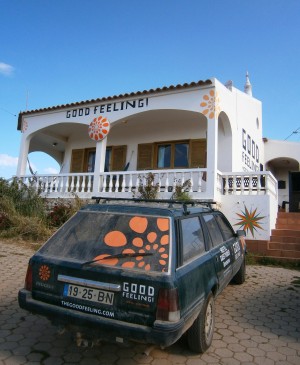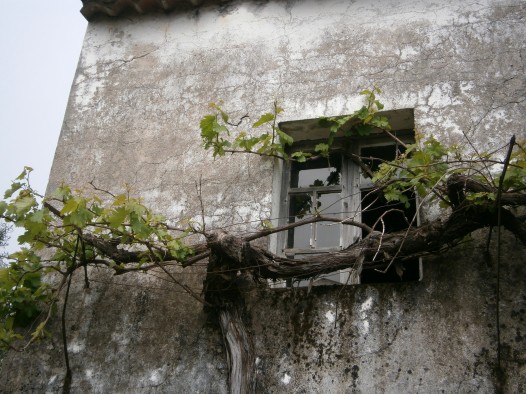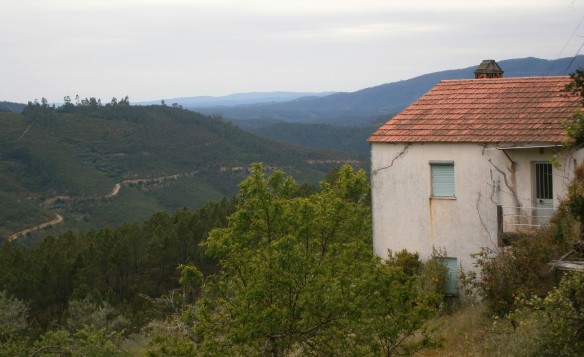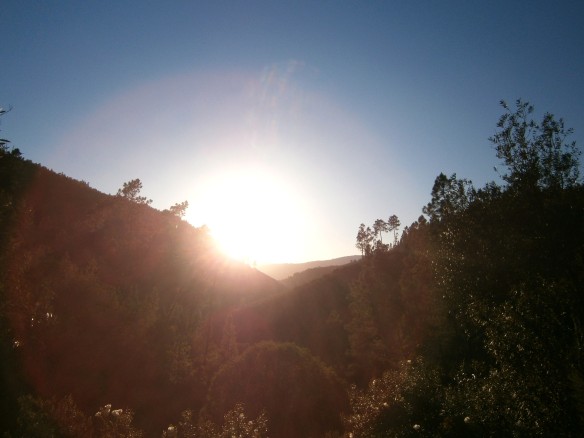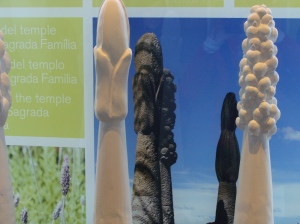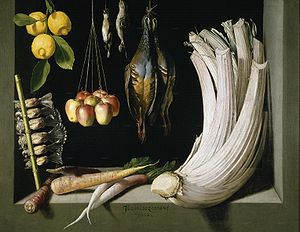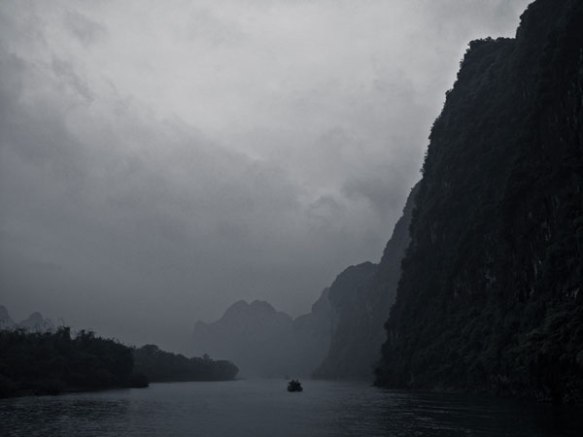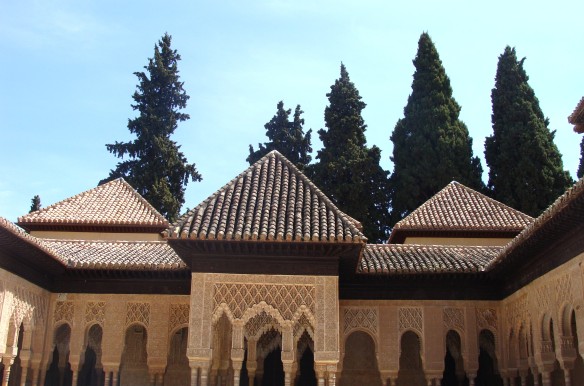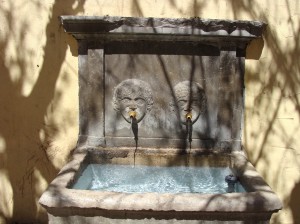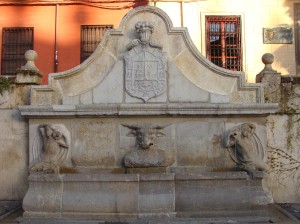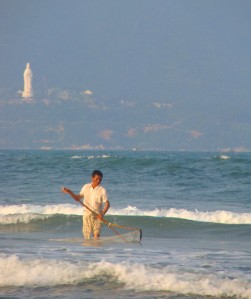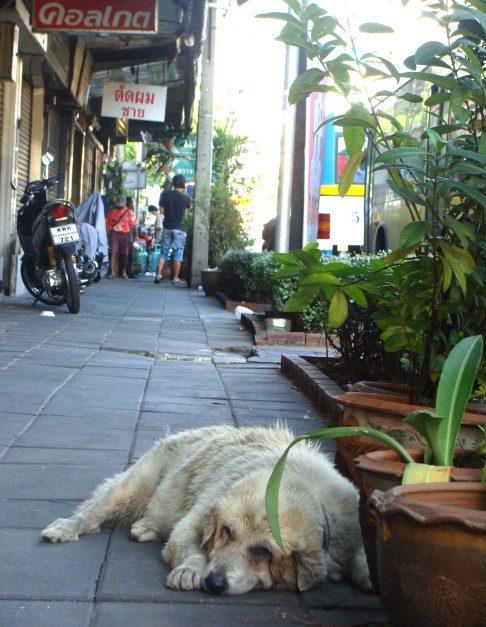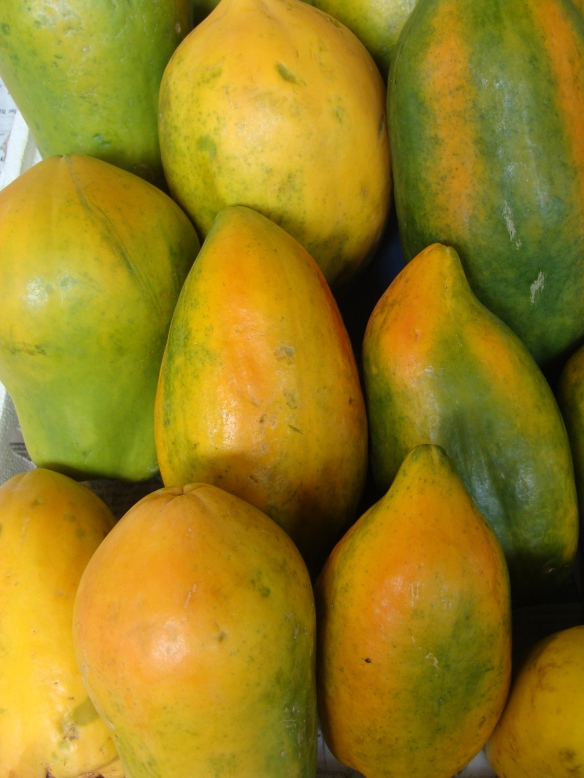You can read guidebooks and plan all you want, but it’s only when you step foot in a place that you know whether it resonates. And I don’t mean a pleasant vacation experience. I’m taking about that mysterious alchemy when a place clicks with you deeply.
Portugal has been like this for me. Which is funny, because I came to this country for purely utilitarian reasons: close to Spain, pretty cheap, good seafood. So when the lumbering bus, with me as the lone passenger, drove over the bridge between Spain and Portugal, I was surprised by my heart lifting.
It all began with the views out the bus windows. Something in that poignant combination of white-washed walls, sea light, husky stone hills, and ruins. The ruins of buildings were everywhere, left standing even in the middle of towns. They seemed a testimony to human history and the slow erode of nature: bare bones of homes crumbling under the sun.
This connection deepened when I checked into my hostel in Raposeira, a village in the Sagres region near Cape St. Vincente, the most south-west point of Europe. “Good Feeling” is a chilled out place run by Portuguese surfer dudes who wanted to be near the sea while making a living. Porch hammocks and communal clay-pot dinners by the village chef added to the homey appeal.
This became my homebase for hiking through the surrounding natural park of Costa Vicentina. And, lucky for me, low season meant long hikes without seeing a soul.
The most memorable walk was down the West Coast to Cape Vincente. My new friend Christian and I trekked in silence for hours through varied landscape. Sheer coastline, and huge fields of golden shrubs and shale. Strangely alien satellite stations, rye fields, abandoned farms. It was my kind of pilgrimage.
One detour led us to a ruined fort with only three walls; the fourth opened to the sea. A steep cliff with wrought-iron handholds set into the stone led us down to the ocean. We sunned on the rocks and steeped in that ancient place: wild, but with a strong sense of human past. The rough hewn steps were well-worn, and I could picture boats docking in the crash of waves.
As it turned out, that location was built in the 1400’s as protection from the Moors across the way in Morocco. And because the way down was steep, it has remained outside of tourism’s reach, lending to its timeless atmosphere.
Soon after our detour we arrived at the cape — a tourist circus, but stunning nonetheless. I actually kind of appreciated the food and booze trucks parked along the road to the lighthouse. The “Last Sausage before America” provided a surreal carny contrast to the seascape.
Following that hike to the Cape, walks in the nearby hills sealed my love affair with the region. Through research, I discovered that the Cape Vincente area has been considered sacred for centuries, marked by stone megoliths in the neolithic era, while the ancient Greeks called it a portal for the Gods. On the footpaths, hearing only melodic cowbells, birds, and occasionally passing a Sheppard and his flock, I could understand why.
Barbara Kingsolver (whose book I was devouring while in Raposeira) talks about how humans are primarily visual when falling in love, ignoring the importance of the other senses. But the beauty of countryside is a full-bodied experience. This is why photos don’t always do justice to a landscape: even if a place isn’t immediately visually stunning, it can resonate on so many other levels.
The Sagres region is, in fact, blessed with good looks. But my feeling of connection came from breathing in the spicy scents of wild lavender and rosemary and the sun burnished rocks. It was the fresh air on my face, the texture of the path beneath my feet, the low sound of wind in the pines.
A week later, when I travelled up to central Portugal for a yoga retreat, I had the chance to connect to a different landscape. Vale de Moses yoga centre is in a remote area in the mountains, with the nearest village being only a couple hundred people, and the second nearest, called Figuero, an abandoned town that is slowly crumbling back into the rocks.
When you arrive at the retreat centre, a potholed gravel road winds down to the farmhouse set into the mountainside. A river runs at the bottom of the property, and the only sounds in the valley are water over the rocks, and birds to wake us in the mornings.
Each morning we did a silent walk and meditation along the narrow paths nearby. One day, our yoga teacher Tashi had us move along slowly, touching and connecting to the textures of the place, not just using our eyes. She explained it further: “Imagine that everything you touch is receptive. Your feet, your hands, are in active reciprocity with what is around you.”
So we walked along in single file and I put my hands on smooth rocks and the massive pine cones that had fallen onto the path. Touched new green leaves, spiky mountain shrubs, and raindrops on the spider webs hammocked between flowers. I felt the path come up to meet my feet in a different way; it was refreshing.
Later that day, sitting on the porch by the river, I kept thinking: what if I were always able to see myself as part of a nourishing ecosystem, like I do here? It’s old wisdom, but if I and everyone else thought this way, it would alter how we use the land. We couldn’t help ourselves.
Tashi’s meditation also brought to mind John O’Donohue’s book “On Beauty”. In one chapter, he talks about how landscape remembers us. How perhaps the land responds to our presence and our footsteps, and that living in a natural place is always living in active engagement.
When I first read his words, they made intuitive sense to me – growing up on our farm, working in the fields, I always felt I was in relationship with the land around me. Writers like Michael Pollen, Jay Griffiths, Joanna Macy, and many more, provide varied perspectives on this reciprocity.
The difference comes when you actually feel it. The experiences I’ve had in the Portuguese countryside has reminded me of my life-long/life-line connection to land. Even on another continent, across the Atlantic.

